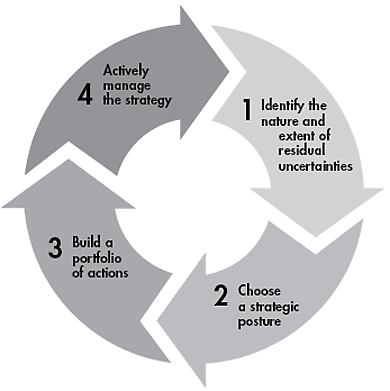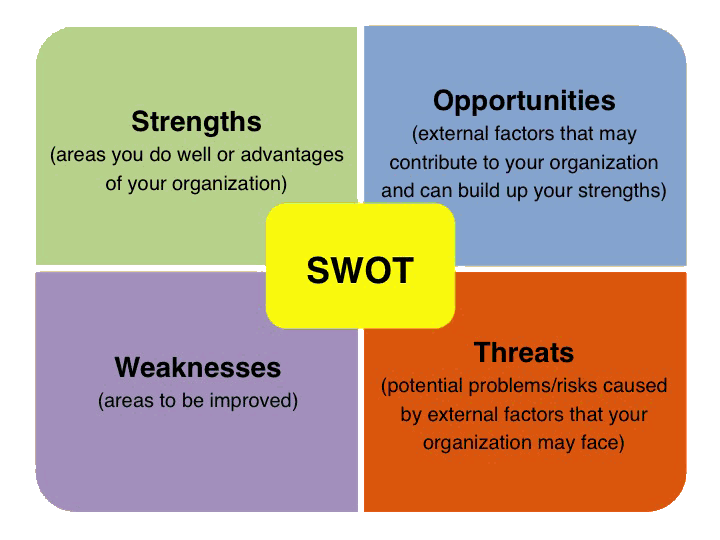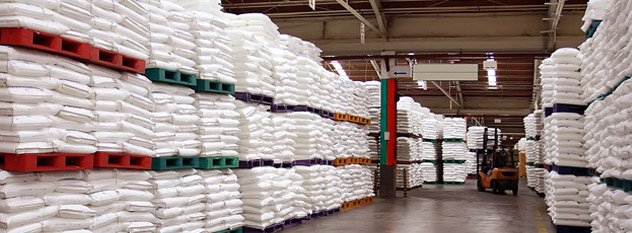What is uncertainty in business?
Uncertainty in business is a situation in which the degree of risk, the magnitude of circumstances, conditions and consequences are not known or unpredictable.
Measures to handle uncertainty:
Nowadays organisations are well positioned to handle the uncertainty and risks that arise from both internal and external environments. It is not an easy thing to handle the uncertainty arise from the external environment over which organisations have no control. The new techniques developed by the modern managers maximises the scope for new business opportunities to handle the complexities involved.
Studying, facing and managing uncertainty in an isolated business environment is not possible, but it can be operated as an integral part of the entire business environment. Predicting uncertainty and decision making are possible when they have well developed corporate planning and development strategies so that the business can able to adopt flexibility in a cost-effective way. It needs proper communication about emerging threats and opportunities with the people of the internal environment and knowledge about the external environment.

In order to manage uncertainty, creativity and freedom to take quick decisions are recommended. Too much uncertainty in business leads to losses. So it requires inspirational risk leadership and people devoted to monitoring and managing overall risk and also matching the probabilities of risk and opportunities to handle uncertainty greatly reduces the cost.
Why cost increases due to uncertainty?
Organisations need to spend more during uncertain conditions for effective handling and for the survival during tough situations. Cost increases due to the reasons as mentioned below.

Market research cost:
Marketers have to spend more on market research activities in order to predict, identify and manage the changing market conditions, needs, tastes and preferences of the customers, and for analyzing competitors in the real world.
Product development cost:
Cost increases due to Improving the product features and quality to satisfy the tastes and preferences of the customers’ and to face competition.
Training and development costs:
Recruiting less skilled employees may result in the decrease in quality and sales, so organisations need to spend more on training and development programs. It increases the morale of the employees and motivates them to dedicate their capabilities for the success of the organisation.
Cost to fulfill government policies:
Regulations may come in many forms and can be imposed by governments at different levels that either directly increases costs, or it causes delays that translate to higher costs.
Customer relations campaigns:
During uncertain conditions, it is recommended to maintain proper customer relations because are the rulers of the market. Maintaining customer relations make possible to know and fulfill the errors, so organisations spend more on customer relations campaigns during uncertainty.
To reach the new technology:
Innovations and arrival of new technology may become a challenge to the organisations, so in order to update according to the external environment; firms have to spend more on establishing and adopting the new technology.
Advertisement costs:
Competitors are one of the major threats to the business firms; it is not possible to control the external environment. So, many organisations promote their product and create awareness through various advertisement strategies like celebrity advertising, guerrilla marketing, covert advertising, online advertising, etc,
How to predict uncertainty?
Business is a complex system of people and assets, which operates within a system of the internal and external environments. Sometimes Pressure builds up between these two systems, and it may result in sudden, serious and irresistible outcomes. Exploring and identifying pressures enable to face major threats.
SWOT analysis is one of the best ways to predict and manage uncertainty. Swot analysis is to identify strengths and weaknesses of the organisation, as well as opportunities and threats that the organisation faces from the external environment.
Strengths and weaknesses can be controlled and managed, but in the case of opportunities and threats, it is not possible to control because which are raised from the external environment.

S Strengths:
Objectives of the organisation, capital, goodwill, superior marketing skills, decision-making capabilities, committed employees, Brand name, customer relations, loyalty, financial resources and product and services are the beneficial aspects and strengths of the organisation.
W Weaknesses
The characteristics that lead an organisation towards losses can be considered as weaknesses of the organisation such as limited financial resources, under trained employees, low-quality products and services, poor customer relations, narrow product line, weak marketing and distribution skills.
O Opportunities
Opportunities always come from the external environment, so identifying opportunities to plan and execute strategies that enable to create more profits. Examples of business opportunities are rapid market growth, deregulation of government policies, sales decline for a substitute product, changing customer needs, taste and preferences, economic boom.
T Threats
External environmental that is not possible to control and creates uncertainty and trouble to the firm such as increased government regulations, decline stage of the product lifecycle, new strategies of the rival forms, the introduction of new substitute products, demographic changes, financial crisis, severe competition.
How to reduce cost during uncertainty:

By choosing low cost and more effective advertising strategies:
Online advertising, guerrilla marketing strategies, using print media and identifying target customers to communicate greatly reduces the advertisement costs.

Training programs by using internal sources:
To reach the growing technology, training is the best way to adopt it successfully. Recruiting experts or using internal sources for training programs not only reduces the cost and time but it also increases the morale and industrial relations.

Using low-cost tools for market research:
Nowadays market research has become the costliest process, uncertainty forces the organisations for market research to know the market preferences and for strategic decision making. Using low-cost tools for market research such as using online reviews, research only in target markets, statistical studies, research in sample markets, etc,
By choosing better financial sources:
Acquisition of finance is the major part of any business organisation, it circulates to enlarge business. By choosing better financial sources with less and fixed rate of interests make the firm knows its fixed costs each month will not change and the payments stay the same or using organisations assets in creating financial support reduces the cost.

Buying raw materials during low prices:
Raw material prices become very sensitive at the time of uncertainty, with the fluctuating interest rates, prices of raw materials also fluctuate. The performance of commodity purchasing departments also highly reduces the cost of production, so buying raw materials in a bulk at lower prices makes possible to handle the uncertainty.

Be innovative rather than following competitors:
It is not always possible to predict the strategies of the competitors’, by following or continuous counter strategies may not help the firm. Innovative strategies can make the competitors follow your business strategies; it greatly increases the brand image in the minds of the customers’.




